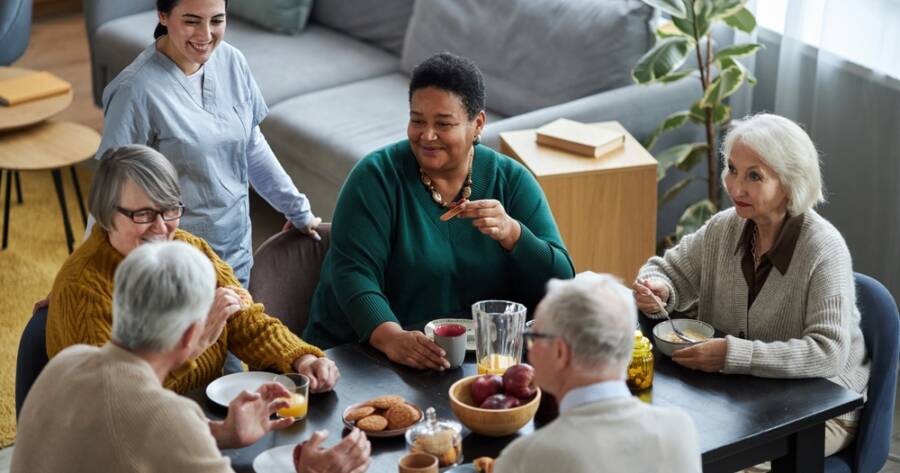As more individuals approach their golden years, the concept of retirement is being redefined. Gone are the days when aging simply meant slowing down. Instead, active adult senior housing offers a lifestyle brimming with opportunities, connections, and convenience. Discover why this housing trend is revolutionizing retirement living!
A Shift Toward Independent Living
One of the primary reasons active adult senior housing is gaining traction is the desire for independence. Many seniors are fully capable of managing their daily lives without the need for assisted living or nursing home care. These communities provide an environment where older adults can maintain their autonomy while enjoying amenities that support an active lifestyle.
Designed for independent living, these communities often include features such as fitness centers, walking trails, and clubhouses that promote engagement and well-being. While some seniors may eventually require additional support, active adult housing allows them to enjoy self-sufficiency for as long as possible. For many, this is an ideal balance—remaining independent without the burden of home maintenance or the premature move to assisted living.
Prioritizing Health and Wellness
Active adult senior housing places a strong emphasis on health and wellness. Many of these communities feature fitness centers, yoga studios, swimming pools, and wellness programs tailored specifically for older adults. Regular exercise has been proven to support heart health, boost cognitive function, and improve overall quality of life.
Many communities also offer nutritional programs, wellness workshops, and easy access to healthcare resources. While each resident’s health journey is unique, these wellness-focused initiatives ensure that seniors have the support they need to maintain a healthy and fulfilling lifestyle.
Social Connections and Community Engagement
Social isolation can be a significant challenge for seniors, particularly after retirement. Active adult communities are designed to foster meaningful connections through social events, group activities, and communal spaces that encourage interaction. Residents can participate in clubs, group outings, and social gatherings that help build a strong sense of community.
Many of these communities feature game rooms, dining halls, and entertainment areas where residents can form friendships and engage in shared interests. By promoting social engagement, active adult housing helps combat loneliness, which is linked to improved mental and emotional well-being.
Diverse and Customizable Housing Options
One of the advantages of active adult housing is the variety of living arrangements available. Whether seniors prefer single-family homes, condominiums, or townhouses, these communities offer a range of options to suit different needs and budgets.
Many homes are designed with accessibility in mind, featuring open floor plans, step-free entryways, and minimal maintenance requirements. Downsizing from a larger home to a more manageable space can provide financial and practical benefits while still allowing for comfort and personal expression.
Convenient Access to Healthcare and Support Services
While active adult communities emphasize independence, they also provide convenient access to healthcare services. Many are located near medical facilities, while some offer on-site healthcare providers, wellness checks, and transportation for medical appointments.
These resources provide peace of mind for seniors and their families, knowing that healthcare support is available if needed. While not all communities offer extensive medical services, many incorporate elements of health-focused living to support residents’ well-being.
Affordability and Financial Flexibility
Compared to traditional retirement homes or assisted living facilities, active adult communities can be a more affordable option. Costs vary based on location, amenities, and housing type, but many communities provide flexible financial models, including rental and ownership options.
For retirees on a fixed income, these options allow for financial stability and predictability. Some communities even offer cost-effective programs to ensure seniors can enjoy a fulfilling lifestyle without breaking the bank.
The Growing Demand for Active Adult Housing
With the senior population expected to grow significantly in the coming decades, the demand for active adult housing will continue to rise. According to demographic projections, the number of adults aged 65 and older will more than double by 2060, increasing the need for housing solutions that prioritize independence, community, and well-being.
Active adult housing offers a forward-thinking approach to retirement, catering to seniors who seek engagement, wellness, and autonomy. As retirement expectations shift, these communities provide a modern solution that meets the evolving needs of older adults.
The Future of Retirement Living
Active adult senior housing represents the future of retirement living. By blending independence with social engagement, health-focused amenities, and diverse housing options, these communities create an environment where seniors can thrive.
As the demand for innovative housing solutions grows, active adult communities will continue to evolve, offering more opportunities for seniors to enjoy an active, fulfilling, and independent lifestyle. For many, this housing model is not just a place to live—it’s a place to flourish.

